This article was medically reviewed by Sarah Gehrke, RN, MS. Sarah Gehrke is a Registered Nurse and Licensed Massage Therapist in Texas. Sarah has over 10 years of experience teaching and practicing phlebotomy and intravenous (IV) therapy using physical, psychological, and emotional support. She received her Massage Therapist License from the Amarillo Massage Therapy Institute in 2008 and a M.S. in Nursing from the University of Phoenix in 2013.
wikiHow marks an article as reader-approved once it receives enough positive feedback. This article received 24 testimonials and 87% of readers who voted found it helpful, earning it our reader-approved status.
This article has been viewed 2,482,639 times.
Did you know the cervix changes position and texture depending on where you are in your ovulation cycle? Feeling your cervix can help you determine whether or not you are ovulating, and it's a great way to better understand your reproductive system. There's no special equipment needed to feel your cervix. See step one for guidance.
Steps
Finding Your Cervix
-
1Know where your cervix is located. The cervix is the lowermost part of the uterus, where it connects with the vaginal wall.[1] It is located 3 to 6 inches (7.6 to 15.2 cm) inside the vagina, at the end of the vaginal tunnel. It is shaped like a small donut with a tiny hole in the center. The position and texture of the cervix change throughout the ovulation cycle.
- The inner canal of the cervix contains glands that secrete vaginal mucus. The color and texture of the mucus also change throughout the cycle.[2]
-
2Wash your hands with soap and warm water. Since you'll be using your fingers to feel your cervix, it's important to wash your hands thoroughly to prevent transmitting bacteria to your reproductive system. Avoid using lotion or hand cream before feeling your cervix, since the ingredients in these products can lead to vaginal irritation or infections.
- If you have long nails, you might consider giving them a trim before feeling your cervix. A long, sharp nail could scratch your vagina.
Advertisement -
3Get in a comfortable position. Most women find that a sitting position (rather than standing or lying down) allows for easy access to the cervix with a minimum of discomfort. Sit on the edge of your bed or bathtub with your knees apart.
-
4Insert your longest finger into your vagina. Gently move your finger into your vaginal opening and let it glide into your vagina. Depending on where you are in your ovulation cycle, your finger may reach several inches into your vagina before you feel your cervix.
- If you wish, you may lubricate your finger with a water-based lubricant to help it glide in more easily. Do not use petroleum jelly, lotion, or any other product not specifically labeled for use in the vagina.
-
5Feel for the cervix. The tip of your finger will touch the donut-shaped opening at the end of your vagina. You'll know it's your cervix if your finger isn't able to keep reaching further. The cervix may be soft, like pursed lips, or firm, like the tip of your nose, depending on whether or not you are ovulating.
Knowing the Signs of Ovulation
-
1Determine whether your cervix is low or high. If your cervix is "low," meaning just a few inches from your vaginal opening, that means you probably aren't ovulating. If it's "high," located deep within the vagina, you may be ovulating.[3]
- The first few times you feel your cervix, it will be difficult to determine whether it's high or low. Keep feeling every day over the course of a month or two, noting the differences in the position of your cervix from week to week. Eventually you'll be able to tell whether your cervix is low or high.
-
2Determine whether your cervix is firm or soft. If your cervix is firm and tight, you probably aren't ovulating. If it's soft and has some give, you may be ovulating.
- The texture of the cervix during ovulation has been described as feeling like a pair of lips. During other periods, before and after ovulation, it's more like the tip of your nose - slightly hard with less give.[4]
-
3Determine whether your cervix is wet. During ovulation, the cervix will feel very wet with fluids, and you'll likely have an increased amount of vaginal discharge. After ovulation, the cervix will feel drier until menstruation occurs.
-
4Use other methods to verify whether you're ovulating. In addition to feeling your cervix, monitoring your cervical fluids and recording your basal temperature can help you figure out when you're ovulating. This combination of tracking methods is called fertility awareness, and done correctly, it's an effective way to determine when you are fertile. That said, it is not very effective if you want to prevent pregnancy.[5]
- Just before and during ovulation, your vaginal fluid will become heavy and slippery.
- When ovulation occurs, your basal temperature will rise slightly. It's necessary to take your temperature using a basal thermometer every morning so that you catch the rise in temperature.[6]
- Always use protection if you're looking to prevent pregnancy.
Expert Q&A
-
QuestionHow long after childbirth before my cervix returns to the normal position?
 Sarah Gehrke, RN, MSSarah Gehrke is a Registered Nurse and Licensed Massage Therapist in Texas. Sarah has over 10 years of experience teaching and practicing phlebotomy and intravenous (IV) therapy using physical, psychological, and emotional support. She received her Massage Therapist License from the Amarillo Massage Therapy Institute in 2008 and a M.S. in Nursing from the University of Phoenix in 2013.
Sarah Gehrke, RN, MSSarah Gehrke is a Registered Nurse and Licensed Massage Therapist in Texas. Sarah has over 10 years of experience teaching and practicing phlebotomy and intravenous (IV) therapy using physical, psychological, and emotional support. She received her Massage Therapist License from the Amarillo Massage Therapy Institute in 2008 and a M.S. in Nursing from the University of Phoenix in 2013.
Registered Nurse It may take up to six weeks or longer for the uterus to completely return to its pre-pregnancy (normal) size and position and for the cervix to heal up and return to normal.
It may take up to six weeks or longer for the uterus to completely return to its pre-pregnancy (normal) size and position and for the cervix to heal up and return to normal. -
QuestionHow do I treat an inverted uterus?
 Sarah Gehrke, RN, MSSarah Gehrke is a Registered Nurse and Licensed Massage Therapist in Texas. Sarah has over 10 years of experience teaching and practicing phlebotomy and intravenous (IV) therapy using physical, psychological, and emotional support. She received her Massage Therapist License from the Amarillo Massage Therapy Institute in 2008 and a M.S. in Nursing from the University of Phoenix in 2013.
Sarah Gehrke, RN, MSSarah Gehrke is a Registered Nurse and Licensed Massage Therapist in Texas. Sarah has over 10 years of experience teaching and practicing phlebotomy and intravenous (IV) therapy using physical, psychological, and emotional support. She received her Massage Therapist License from the Amarillo Massage Therapy Institute in 2008 and a M.S. in Nursing from the University of Phoenix in 2013.
Registered Nurse If you do not have symptoms, then you may not need treatment. If you do have symptoms or concerned about the condition, you can discuss treatment options with your doctor. These may include exercises, a device used to prop up the uterus, or sometimes uterine suspension.
If you do not have symptoms, then you may not need treatment. If you do have symptoms or concerned about the condition, you can discuss treatment options with your doctor. These may include exercises, a device used to prop up the uterus, or sometimes uterine suspension.
Warnings
- You need a well lubricated, clean finger. If you don't, you could throw off the pH of your vagina, cause an infection, or develop vaginal irritation.⧼thumbs_response⧽
References
- ↑ https://medlineplus.gov/ency/imagepages/19263.htm
- ↑ http://www.beautifulcervix.com/your-cycle/#anatomy
- ↑ http://www.kidspot.com.au/birth/conception/fertility/how-your-cervix-changes-during-a-cycle/news-story/7f0992bed39208ead8d340d15595cc6a
- ↑ http://www.beautifulcervix.com/your-cycle/#anatomy
- ↑ http://americanpregnancy.org/preventing-pregnancy/natural-family-planning/
- ↑ http://www.babycenter.com/404_how-do-i-check-my-cervix-for-signs-of-ovulation_1336330.bc
About This Article
To feel your cervix, first wash your hands to avoid transferring any bacteria to your vagina. Once your hands are clean, sit comfortably with your knees apart, which most women find to be the easiest position. Then, gently insert your middle finger into your vagina until you feel a donut-shaped opening. If your finger isn’t able to reach any further, you’ve reached your cervix. For more tips from our Medical co-author, including how to identify ovulation from the feel of your cervix, read on!
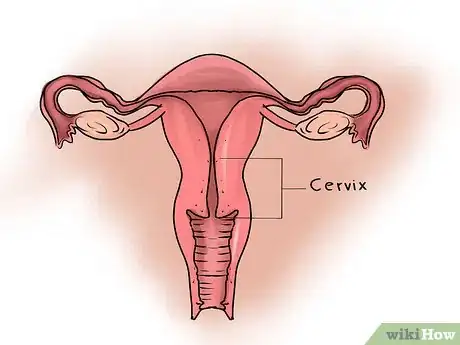
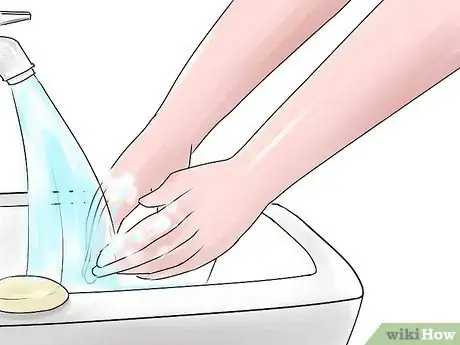


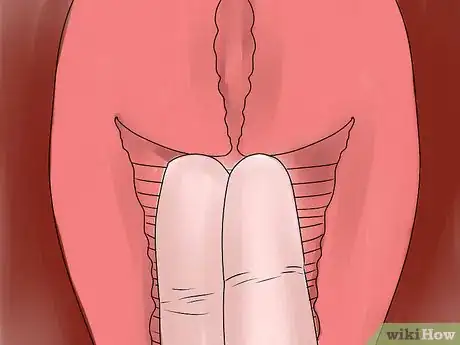

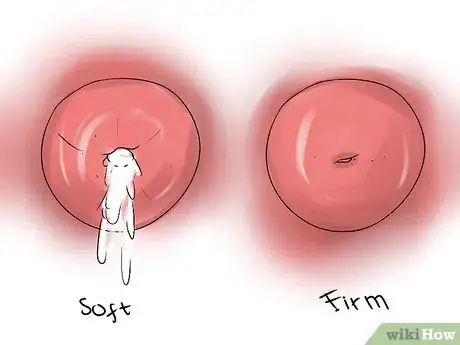
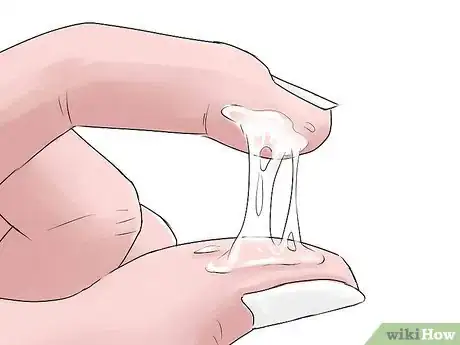
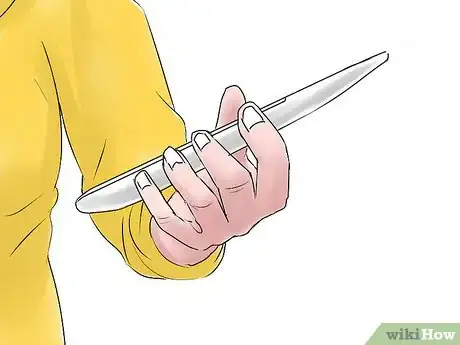





















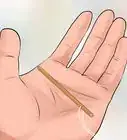






































Medical Disclaimer
The content of this article is not intended to be a substitute for professional medical advice, examination, diagnosis, or treatment. You should always contact your doctor or other qualified healthcare professional before starting, changing, or stopping any kind of health treatment.
Read More...